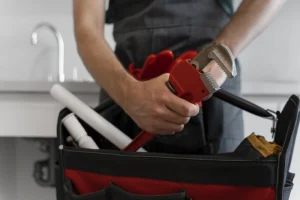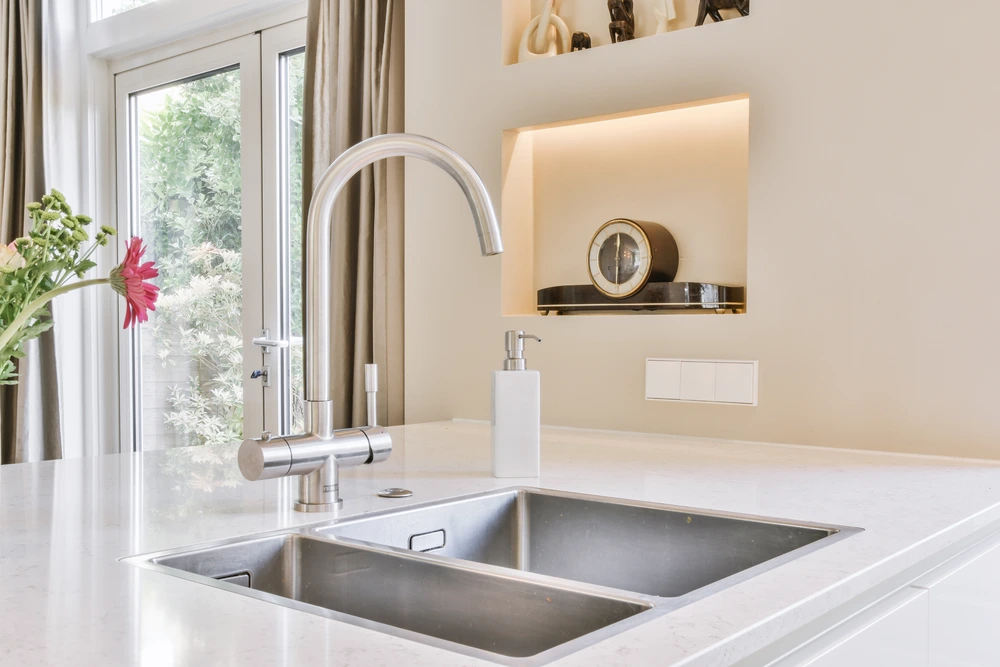Kitchen renovations are a major undertaking that demands careful planning, especially when it comes to essential services like plumbing. While many homeowners focus on cabinetry, benchtops, and appliances, the underlying plumbing work can have just as much impact on the outcome and the total cost.
Plumbing determines where key features such as sinks, dishwashers, and water lines can be installed. Even a minor change in layout can necessitate substantial plumbing modifications, which must comply with ACT building regulations. Overlooking these factors early on can lead to delays, unexpected costs, or compliance issues down the track.
In this comprehensive guide, we’ll explain how plumbing directly affects the cost and feasibility of kitchen renovations in Canberra. From understanding legal requirements to choosing the right professionals, you’ll gain a clearer picture of what to expect and how to budget smarter. Whether you’re planning a small upgrade or a full-scale renovation, knowing how plumbing fits into the bigger picture is key to a successful project.
Why Plumbing Matters in Kitchen Renovations
When you remodel, plumbing often drives the budget more than you’d think. Here’s why: your kitchen needs a reliable supply of cold and hot water, proper drainage for sinks and appliances, and sometimes gas lines for stoves. If your renovation design changes the location of these fixtures, the pipes must be adjusted, sometimes through walls and floors. For example, extending a water line for an island bench or moving a sink to a different wall can require breaking into tiling and cabinetry, then repatching and reinstalling everything. That labor adds up fast.
Even if you keep plumbing in place, upgrading fixtures can bite into your budget. A high-end tap and sink may cost hundreds, and installing them properly often involves new sealants and fittings. Adding a dishwasher or instant-hot water unit means extra plumbing connections. On the flip side, doing it wrong is costly: water leaks hidden under cupboards can ruin cabinetry, and non-compliant work can delay your project. A thorough kitchen renovation checklist should include plumbing tasks right from the start, so you don’t get blindsided by surprise expenses later.
Planning Your Kitchen Plumbing Ahead of Time
Good planning is your best defense against plumbing cost overruns. Start by mapping out all your water needs on the floor plan. Where will the sink, dishwasher, fridge, ice maker, and any hot-cold mixer taps go? Mark the drain locations and water inlets.
Plan early: if your sink or drain must move even a few meters, that can mean new pipe runs and extra fittings. Add to your renovation checklist a plumbing review step. For instance, Will I need a hot water outlet, gas line, or water filter here? Check clearance heights (so hoses and faucets fit) and access for future maintenance. Include timeline items like meeting with the plumber and applying for a plumbing permit. In the ACT, even small plumbing jobs require giving Access Canberra a Start of Work notice. Getting the paperwork sorted early avoids delays and fees.
Key plumbing items to consider in your checklist:
- Fixture placement: If you’re moving a sink or adding a new one, note how far pipes must extend.
- New appliances: Dishwashers and fridges often need water taps and drains; include their plumbing in your layout.
- Fixture upgrades: Do you want a fancy pull-out tap or a deep under-mount sink? Some models need extra pipe adapters or waste traps.
- Electrical & gas: If changing stove position, plan separate gas lines (must be by a licensed gasfitter) and power circuits.
- Permits & inspections: Reserve time to submit plumbing plans. All plumbing work (even minor renovations) must be lodged with Access Canberra and inspected.
Regulations and Licensing in Canberra
In the ACT, plumbing work has strict rules. Only licensed plumbers may do nearly any plumbing or drainage task. Under the Water and Sewerage Act, connecting or altering water mains without a licence can draw heavy penalties (up to 50 penalty units). Even small repairs usually require a Certificate of Compliance from the plumber. This means a qualified professional must notify the authorities before starting and certify the job when finished. These forms and inspections have fees, and they add to your timeline, but they protect you from unsafe or noncompliant work.
ACT regulations also require conformity to national standards. All plumbing in a kitchen reno must meet the Plumbing Code of Australia and AS/NZS 3500 standards. In practice, this means using approved materials (like WELS-rated taps) and proper backflow devices where needed. For example, a new kitchen sink must have the right height traps and venting, and any potable hot water connection needs an approved mixing valve.
Costly Plumbing Tasks in a Kitchen Remodel
Here are some common plumbing upgrades and how they tend to affect your budget:
| Kitchen Plumbing Task | Impact on Renovation Budget |
| Moving sink or dishwasher lines | High. Extending or rerouting waste and water pipes involves cutting access into floors/walls and extra materials. It can add thousands if drains must be repositioned. |
| Replacing old pipes/drains | Medium to high. If existing pipes are worn or non-compliant, replacing them may be needed. New PVC or copper piping for the whole under-sink run adds cost. |
| Upgrading sink/tapware | Low to moderate. Swapping to premium taps or a larger sink mostly affects fixture cost. Installation is usually straightforward unless plumbing fittings differ. |
| Adding appliances | Moderate. A new dishwasher requires a water supply and drain connection. If your plumbing already has provisions, the cost is modest; if not, an extra line must be run. |
| Fixing hidden leaks/damage | Variable (potentially very high). Discovering leaks or water damage can balloon costs unexpectedly. It’s wise to budget a contingency for hidden problems. |
| Planning/permits & inspections (ACT) | Administrative. There are fees for submitting plumbing plans and booking inspections, plus the cost of a licensed plumber’s time to handle compliance paperwork. |
Any time a pipe is cut or a new valve is installed, the plumber must work carefully to avoid leaks and meet code. If you try to save money by doing plumbing yourself, remember that non-professional plumbing often causes delays and extra costs.
In short, anything involving water supply or waste, even moving a tap or fitting a new garbage disposal, can add hundreds or thousands to your invoice.
Hiring the Right Kitchen Plumbing Services
Because of these complexities, most Canberra renovators hire licensed plumbers, not DIY. Licensed plumbers bring peace of mind, even if they charge more per hour. Think of it this way: an experienced kitchen plumber knows the local rules, has done this dozens of times, and can spot problems before they happen. They also carry insurance, so if something goes wrong on the job, you’re covered, unlike with a backyard job.
To stay on budget, get quotes from reputable plumbing companies. They can advise on cost-saving options, like reusing existing pipe runs instead of moving everything. For example, keeping the kitchen sink in place and instead upgrading other elements may yield a big aesthetic win with less plumbing hassle. Make sure any plumber you hire provides a written quote that details what is included (labor, materials, permits).
Bundle your work. If you’re doing other trades (electricians, builders), see if your plumber can coordinate with them. Some kitchen renovators are classified as tradespeople (they can do minor plumbing under supervision). But even then, the plumbing work itself must be signed off by a fully licensed plumber. So budget for that certification cost; it’s usually folded into the quote, but be aware it’s a mandatory part of the job. In the end, professional plumbing services may seem costly, but the alternative is usually even more expensive.

Renovate Smarter with Licensed Plumbers
Plumbing is often the hidden force behind the success or cost blowouts of any kitchen renovation. From relocating water lines to upgrading fixtures and ensuring compliance with kitchen renovation regulations in Canberra, every decision you make with plumbing in mind affects your timeline and bottom line. Whether it’s the positioning of your sink or the selection of efficient tapware, understanding plumbing’s role can help you avoid costly mistakes.
By planning carefully and working with licensed professionals, you’ll ensure your kitchen renovations in Canberra meet regulatory standards, function efficiently, and align with your design goals. A well-executed plumbing plan doesn’t just protect your investment; it elevates the entire renovation experience. Keeping plumbing high on your checklist can make all the difference in achieving a high-quality finish without unnecessary delays or expenses.
At Capital Plumbing Specialists, we offer reliable, fully licensed plumbing services across Canberra, including emergency plumbing services, kitchen plumbing upgrades, hot water systems, blocked drains, and more. If you’re planning a kitchen renovation or need expert plumbing advice, contact us today for a professional consultation and personalised service that puts quality and compliance first.
FAQs:
-
What’s included in a kitchen plumbing checklist?
Your checklist should cover fixture locations, drainage, water supply lines, hot water access, and compliance with Canberra plumbing regulations.
-
Do I need a licensed plumber for kitchen renovations in Canberra?
Absolutely. ACT law requires all plumbing work beyond simple tap changes to be done by a licensed plumber to meet safety and compliance standards.
-
Does plumbing affect kitchen renovation costs?
Yes, plumbing plays a key role. Moving sinks or appliances often requires pipe relocation and drainage adjustments, which can significantly increase renovation costs.


 About Us
About Us